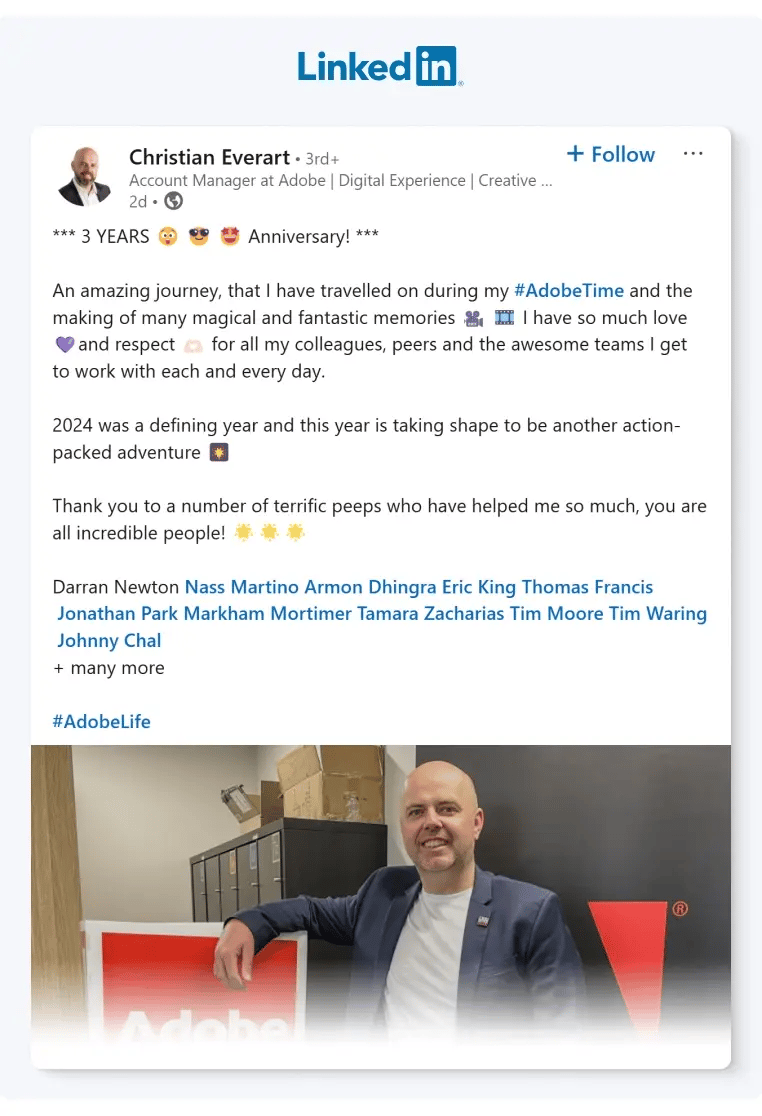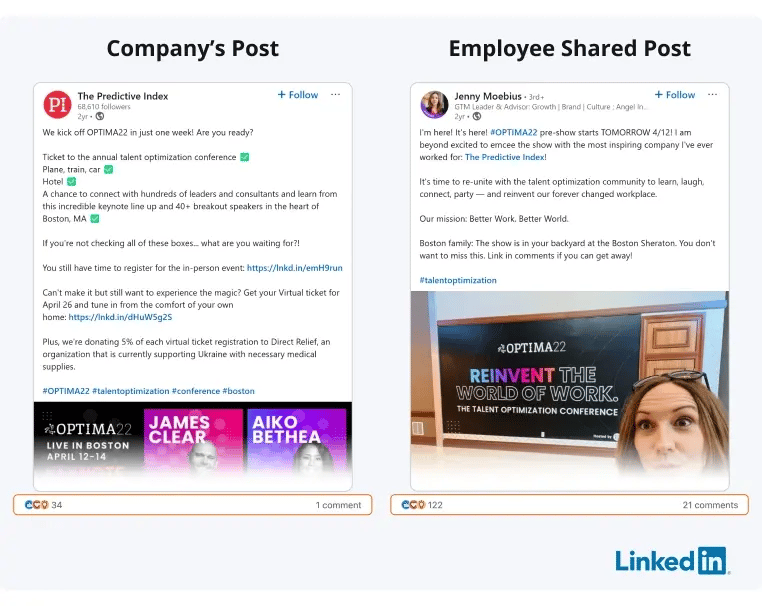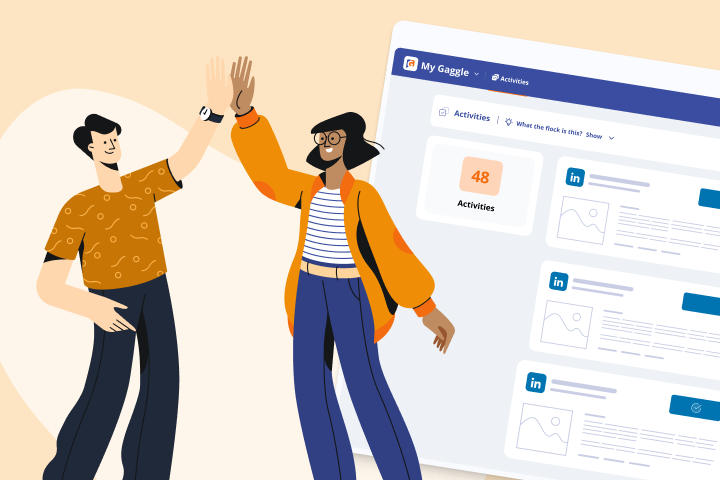What Is Employee Advocacy and Why Does It Matter?
Employee advocacy is a powerful marketing strategy where employees actively promote their company’s brand, products, or services through personal networks, particularly on social media. This organic method of marketing harnesses the credibility and trust that employees have built with their peers, making brand messages more relatable and engaging.
Over the past decade, employee advocacy has evolved from an optional marketing approach to a necessity for modern businesses. With the rise of digital platforms, social media, and remote work, consumers increasingly look for authentic voices over corporate messaging. Traditional marketing methods—such as advertisements and brand-sponsored content—are no longer as effective in gaining consumer trust. Instead, people turn to personal recommendations, making employee advocacy an invaluable asset for any organization.
The Impact of Employee Advocacy by the Numbers
The impact of employee advocacy is undeniable. According to Nielsen, 88% of people trust recommendations from people they know (word of mouth) over brand-driven advertising. This high level of interaction leads to increased brand awareness, greater customer loyalty, and improved business performance.
Beyond its marketing advantages, employee advocacy also strengthens workplace culture. When employees feel connected to their organization and take pride in promoting it, they become more engaged and productive. Gallup’s analysis of 112,312 business units across 96 countries found that highly engaged teams experience 21% higher profitability, 17% higher productivity, and 10% higher customer loyalty compared to disengaged teams.
As businesses navigate the highly competitive digital landscape, leveraging employee advocacy has become crucial for sustaining relevance and trust. When implemented effectively, it creates a ripple effect—enhancing brand perception, driving lead generation, and fostering deeper consumer connections.
5 Ways Employee Advocacy Optimizes Brand Awareness
1. Expanding Organic Reach Through Employee Networks
When employees share company content, they introduce the brand to their personal and professional networks. With an average social media user having around 1,000 connections, a company with just 100 engaged employees can organically reach 100,000 people without spending a dollar on paid advertising.
Companies like Adobe have successfully used employee advocacy to boost their reach. Adobe’s #AdobeLife campaign, for example, encourages employees to share their experiences working at the company, increasing brand exposure and engagement significantly.

2. Building Brand Trust and Authenticity
Consumers today prioritize authenticity. According to the 2024 Edelman Trust Barometer report, content shared by employees is 3x more trusted than content shared by a brand. Employee advocacy creates an environment where potential customers receive genuine insights into company culture, products, and values, fostering deeper trust and engagement.
By empowering employees to share their expertise and experiences, companies humanize their brand. Thought leadership content, behind-the-scenes posts, and employee testimonials create authentic brand stories that resonate with audiences more than polished corporate messaging.

3. Increasing Employee Engagement and Brand Loyalty
A well-structured employee advocacy program benefits both the company and its employees. Employees who actively participate in advocacy programs feel more connected to their organization. Engaged employees are 20% more productive and 87% less likely to leave their job, according to a Gallup report.
Companies can foster this engagement by recognizing and rewarding advocacy efforts. Implementing gamification techniques, such as leaderboards and incentives, encourages employees to actively share content and participate in advocacy initiatives.
4. Enhancing Content Visibility and Social Proof
Employee-shared content not only extends a company’s reach but also serves as a form of social proof. Social proof is a psychological phenomenon where people are more likely to engage with a brand when they see others doing the same.

User-generated content from employees, such as product demos, testimonials, or work culture highlights, is more engaging than branded posts. A Social Media Today survey indicates that content shared by employees generates 8 times more engagement than content shared by official brand channels.
5. Driving Website Traffic and Lead Generation
Employee advocacy is a major driver of inbound traffic and lead generation. When employees share valuable content—such as industry insights, blog posts, or company updates—it attracts prospects to the website, increasing the chances of conversion.

Businesses can track this impact by using UTM parameters, social media analytics, and CRM tools to measure advocacy-driven traffic and conversions.
How to Implement an Effective Employee Advocacy Program
To build a successful employee advocacy program, companies should:
-
Set Clear Goals: Define objectives such as increasing engagement, website traffic, or recruitment.
-
Choose the Right Platform: Use powerful advocacy tools to help you streamline content sharing and boost engagement.
-
Provide Training and Guidelines: Ensure employees understand best practices for sharing company-related content.
-
Recognize and Reward Participation: Use incentives and gamification to encourage active involvement.
A well-defined strategy ensures employees understand the company’s advocacy goals and feel empowered to contribute. Leadership buy-in is also crucial, as it sets the tone for a culture of engagement. The more employees feel valued in their role as brand ambassadors, the more likely they are to participate actively.
Measuring the Success of Employee Advocacy for Brand Awareness
To evaluate the effectiveness of an employee advocacy program, businesses should track key performance indicators such as:
-
Social Media Engagement: Track the number of likes, shares, comments, and overall interactions generated by employee-shared content. This helps assess how well advocacy efforts are resonating with the target audience.
-
Brand Reach: Monitor the increase in brand mentions, use of branded hashtags, and audience growth on different social media platforms. Higher brand reach indicates that employee advocacy is effectively expanding visibility.
-
Website Traffic and Conversions: Use analytics tools such as Google Analytics or HubSpot to measure the number of visitors landing on the website through employee-shared content. Tracking conversion rates from these visits provides insight into the effectiveness of advocacy in driving business results.
-
Employee Participation Rates: Measure the number of employees actively engaging in advocacy efforts, including content sharing, social media engagement, and program participation. Higher participation rates signal a well-adopted advocacy culture.
How GaggleAMP Helps Optimize Employee Advocacy Success
To fully unlock the potential of employee advocacy, businesses need the right tools to streamline content sharing, engagement, and participation. A great example of this is Cribl, the company has boosted its brand reach and engagement by using GaggleAMP's platform. Their focus on industry presence earned them the recognition of Forbes as one of America’s Best Startup Employers.
GaggleAMP provides a structured and efficient way to enhance employee advocacy efforts, ensuring that employees remain active and motivated in promoting their company’s brand. Here’s how it helps optimize success:
-
Gamification Features: Motivate employees with points, leaderboards, and rewards. Employees thrive in competitive environments, and introducing gamification encourages active participation in advocacy initiatives.
-
Branded Resources: Equip employees with high-quality assets to maintain consistency and professionalism. Providing branded visuals, messaging templates, and company-approved posts ensures advocacy aligns with the company’s voice and objectives.
-
Social Media Compatibility: Ensure seamless integration across LinkedIn, Twitter, Facebook, and more. Employees should be able to share brand content effortlessly across platforms without friction.
-
Streamlined Content Sharing: Provide ready-to-share content to simplify advocacy efforts. The easier it is for employees to participate, the more likely they are to remain engaged.
By leveraging these features, GaggleAMP empowers businesses to turn employee advocacy into a scalable and measurable strategy.
Ready to Boost Your Brand Awareness with Employee Advocacy?
Employee advocacy is a cost-effective and powerful tool for increasing brand awareness, building trust, and driving meaningful engagement. By implementing a structured advocacy program, businesses can harness the voices of their employees to amplify their brand’s reach.
Ready to take the next step? Investing in a structured advocacy platform like GaggleAMP not only boosts brand visibility but also fosters a culture of engagement and authenticity, driving meaningful results for both employees and the organization. Sign up for a Demo today!














